Full Circle Ending, Explained - Vulture
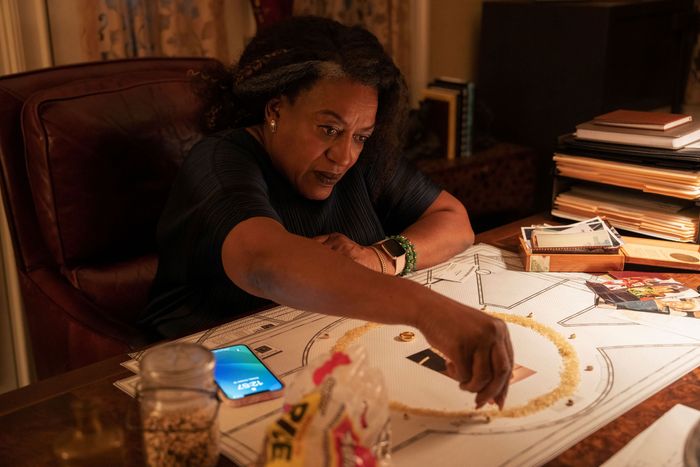
By opening and closing on the same two images, the Solomon/Soderbergh series examines the lies that fueled two families' decades of delusions. Photo: Max
Spoilers follow for the miniseries Full Circle, which premiered its final two episodes on Max July 27.
Wouldn't you know it: In its final episode, Full Circle comes full circle. The limited series begins and ends with two images: a framed, Picasso-esque painting sitting in overgrown grass and a sun-faded billboard advertising "a life of luxury" at the tropical Colony at Essequibo resort. Neither image means anything to viewers upon first appearance, but these pieces of art come to represent everything the two families at Full Circle's center stand for. The painting signifies the wealth and connections built by the Brownes via their culinary empire, while the Essequibo rendering serves as a reminder of betrayal and promise of revenge for the Mahabir crime family. By the end of its finale, as Full Circle illustrates how the Brownes' painting came to be abandoned at a pier and why the Mahabirs' advertisement sat forgotten for decades next to a half-built compound, each image has been diluted to its core essence of self-delusion.
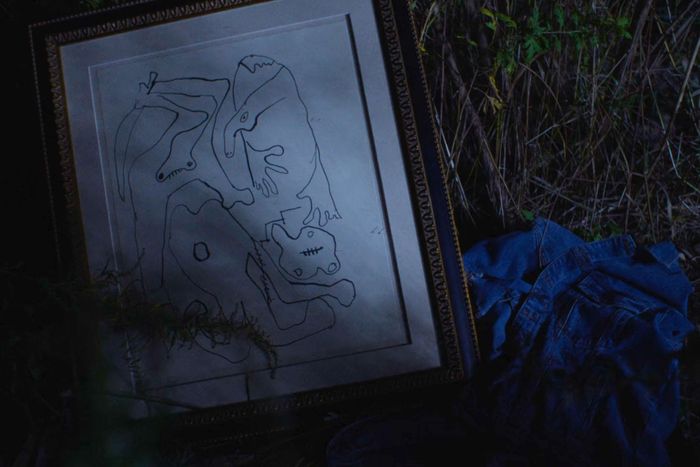
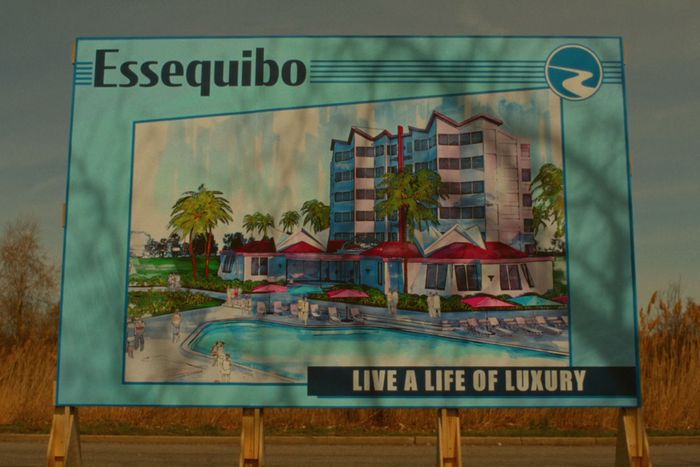
From left: Photo: MaxPhoto: Max
From top: Photo: MaxPhoto: Max
The six-part series from writer Ed Solomon and director Steven Soderbergh starts off with a clear delineation between villain and victim: The Mahabirs, led by matriarch Savitri (CCH Pounder), have been struggling with various arms of their criminal organization since the death of Ranwell, Savitri's husband. Their many schemes include bringing fellow Guyanese to New York City and forcing them into indentured servitude-style jobs to pay off their travel. Mrs. M and her second-in-command Garmen (the mesmerizing Phaldut Sharma) manipulate immigrants' American-dream aspirations, and in the series's opening minutes, they've ensnared three 20-somethings: masseuse-in-training Natalia (Adia), her younger brother Louis (Gerald Jones), and his best friend Xavier (Sheyi Cole). New to the U.S., Louis and Xavier soon learn that Mrs. M believes their inconsistent business is due to a curse set upon them by Clarence (Ted Sod), the father of a boy Ranwell killed back in Guyana as part of a real-estate scheme. Clarence now wants "to close the circle of his own suffering" — that is, get revenge — and convinces Mrs. M to participate in an obeah ritual to reverse her fortune. Full Circle is clear that Mrs. M's growing zealotry in this spiritual folk practice is at odds with the rest of her family, yet no one argues against the eye-for-an-eye-style kidnapping and killing of teen Jared Browne (Ethan Stoddard). To appease Clarence and reverse the Mahabirs' string of bad luck, a stranger's death seems like a reasonable price.
Compared to the Mahabirs, the Brownes appear positively Rockwellian: Sam (Claire Danes) and Derek (Timothy Olyphant) run the business side of her father Chef Jeff's (Dennis Quaid) expansive food corporation built on the back of a tomatillo salsa. But there's a deep unhappiness underlining their interactions, and wrangling Jeff seems more stressful than it needs to be. Solomon's dialogue relays Jeff's inability to understand finances and assumption that attorney Sam will handle everything because she's spent decades doing just that; the amount of time he spends patting himself on the back for being a good person, particularly when it comes to his fans, suggests, of course, that he's not. (And that French braid he's sporting? An unhinged choice.)
Until its final episodes, Full Circle is cagey about exactly how the Brownes and the Mahabirs are linked, and why the death of the former's son would wipe the latter's metaphysical slate clean. The mysticism of the obeah and the mystery of the connection to the Brownes is key to building the series's peculiar, deliberately evasive vibe, and it gets a little too convoluted when finally explaining the connections between the two families. Twenty years ago, Sam was involved in a property-investment scheme in Guyana with Ranwell, who seized the land of farmers and the underclass, accepted bribes in return for payments made to foreign investors, then abandoned the projects after everyone got their money. Ranwell killed Clarence's son as an act of intimidation in order to keep the grift going, and that murder — and the financing it provided each family — has lingered between the Mahabirs and Brownes since. Sam has convinced herself the Essequibo money she used to kickstart her father's career was simply acquired, not stolen, and Derek used that same blood money to abandon another son 16 years earlier and secure his one-night-stand's silence. Meanwhile, Mrs. M uses her established connections back home to maintain the pipeline of young and impressionable Guyanese immigrants who work at her various businesses and line her pockets.
The Guyana cash fueled the corruption of both families, and the symbols with which they surround themselves are an extension of that hubris. The Mahabirs itemize their attempts to seek penance: Mrs. M's chalk and rice circles provide the protection she believes she deserves, a ransom demand in the amount of pi offers another circle motif, and her husband's photograph and wedding ring are centered as totems on her desk. For the Brownes, their stuff is about status: the wall of limited-edition sneakers in Jared's bedroom, the pricey security system Sam installed in their apartment, Jeff's high credit line with a nearby casino. All are external manifestations of the prestige and good karma each family is convinced they're owed, and those two art pieces in particular convey how each family has persuaded themselves that they deserve whatever they're fighting for. A shrunken-down version of the Colony at Essequibo ad hangs in Mrs. M's office, while an unidentified-but-expensive painting receives primary placement in the Brownes' living room.
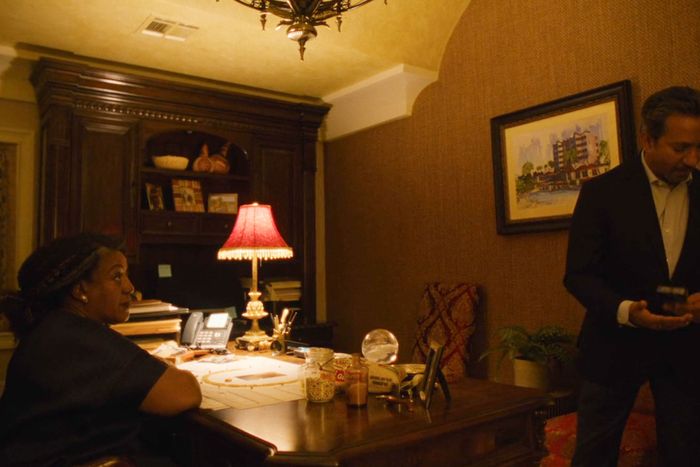
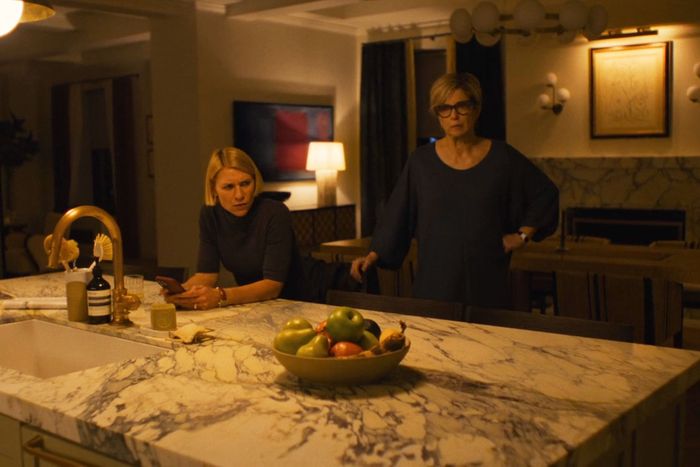
From left: Photo: MaxPhoto: Max
From top: Photo: MaxPhoto: Max
Artistically and aesthetically, the pieces don't have much in common. The watercolor resides in a simple frame within Mrs. M's eyeline when she sits at her desk but goes unnoticed by those who visit the room. The latter, a bunch of sparse squiggles complemented by accent lighting, is bolted to the wall, worth so much that Jared has mentioned the price to his friends and U.S. Postal Inspector Melody Harmony (Zazie Beetz) comments on it when she questions the Brownes in their apartment after the botched kidnapping. (Danes's best line delivery of the series might be her sneering, "Actually, it wouldn't," in response to Beetz's assessment. "You know, that painting would be worth a lot more if the head was on top of the body.")
Narratively, though, the images each reflect how their owners define themselves. Mrs. M sees herself as a warrior blessed by the obeah, and the sketch of the Colony at Essequibo is a portrait of her past, what could have been, and what she still needs to accomplish to get vengeance for her husband. Sam sees herself as a resourceful survivor, and the costly painting is proof that her hustling in support of Chef Jeff — even if it required immoral business decisions — paid off. "I worked hard for this life, and I'm going to protect the fuck out of it," she tells Mel in a girlboss-y moment that feels hollow because it is. Mrs. M and Sam aren't the same, but they've told themselves the same types of stories about what it takes to succeed. But is success genuinely earned if other people have to be displaced or killed to achieve it?
Full Circle ends by placing the two images in direct tension with each other. If one piece of artwork is financially worthless and the other is visibly prized, their thematic importance reverses in the final moments of "Essequibo." Desperate to get back to Guyana and needing cash for the flight, Louis sneaks into the Brownes' apartment to steal the painting; when Sam learns he's from Essequibo, she gives it to him to ease her guilt. But when Louis and Natalia reach Garmen and Xavier at the plane home, they walk into another double cross: Garmen wants Xavier to kill Louis and Natalia so they can tie up Mrs. M's loose ends. The painting is Garmen's funding for a new life — until Xavier kills Garmen, defending Louis and Natalia and securing their passage home. Still, he leaves the artwork in the grass, discarded and stripped of its power. Xavier's pursuit of the American dream has no space for the symbols of other people's dreams.
So Louis and Natalia return home, free of Mrs. M and the debt she forced them to accrue. But they're also back in the explicit shadow of the Colony at Essequibo, walking among its deserted condos and passing that "coming in 2003" billboard. Twenty years later, Natalia and Louis fled this place, but not the devastation it wrought; like that boy Mrs. M's husband killed, the siblings are victims of other people's greed. The Colony at Essequibo advertisement, with its beatific palm trees and white tourists, holds no value for them, just like that painting held none for Xavier. The ad is a fantasy and the series's real curse. "I don't know what's worse: It works, and it's all broke up now, or it never worked in the first place," Natalia says to Louis of the obeah ceremony Mrs. M thought could provide a circle of protection around her family. In Full Circle, symbols deceive just as much as the people who give them their meaning.
Comments
Post a Comment